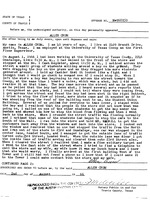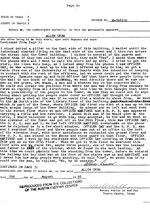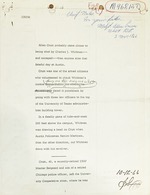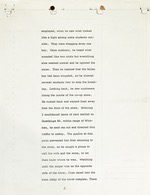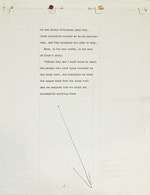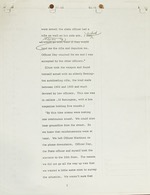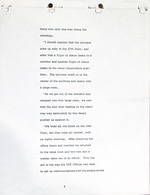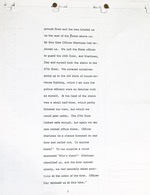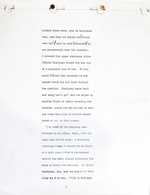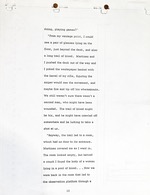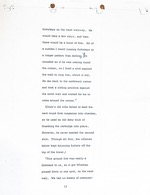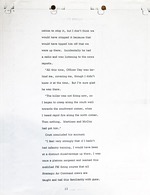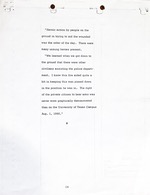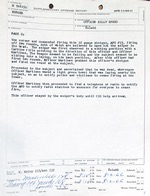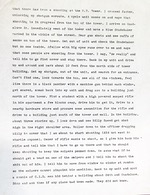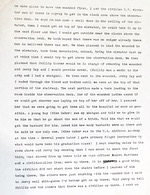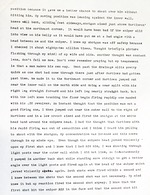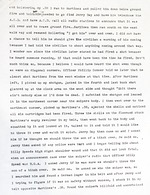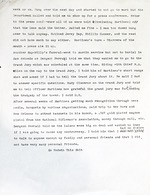It seemed like every other guy had a rifle. There was a sort of cowboy atmosphere, this “Let’s get him” spirit.
On August 1, 2016, Texas Senate Bill 11 will go into effect, allowing license holders to carry concealed weapons throughout university campuses. Though private universities will have the option to opt-out, state schools will not. The legislation has been particularly contentious on the campus of the University of Texas at Austin, where mock shootings have played out against a backdrop of resistance from students, faculty, staff, and some wonderfully absurdist protests.
August 1st will also mark the 50th anniversary since the UT tower shooting, commonly referred to as the first mass school shooting in US history.1 The Texas state government hasn’t elaborated on why they chose this particular date and not another, but we should not view it as a coincidence. Armed civilians are a crucial part of the story, one that’s been politicized by both gun rights and gun control advocates, and all of this takes place against the backdrop of a state that is in many ways the heartland of gun culture.
When Whitman began shooting, the Austin Police Department was ill-equipped for the situation. They mostly possessed only their service revolvers and shotguns, weapons that were useless when it came to long distances. If they did possess a rifle, it was because it was a personal weapon.2 The officers weren’t alone, though. Once bystanders realized what was going on, many ran to retrieve their own firearms and fired back at the tower. In a few instances, police officers drove people in their squad cars to purchase ammunition or to pick up rifles. Some people asked police what to do if they had a shot at the sniper. The police said that they should shoot to kill.3

Gun marks on the side of the UT tower. Most of these marks have since been plastered over. Image courtesy of Austin History Center, Austin Public Library

Local news cameras recorded some of the firefight. Video clip courtesy of the Texas Archive of the Moving Image
It was a surreal scene. Bill Helmer, who was a student at UT at the time, recounted his experience on campus that day in Texas Monthly. When he first noticed people shooting back at the tower, he thought, “Just what we need – a bunch of loonies lobbing bullets all over the place, killing even more people.” He recalled seeing a man in full camo scouting out the best position from which to fire back at the tower, and claims that his friends saw a good ol’ boy with a rifle burst into the San Jacinto Cafe southeast of campus, grab a six pack of beer, and rush out.
But then he realized that “as the ground fire increased, the shots from the tower came less often.” The return fire was limiting the amount of damage Whitman was able to do by keeping him pinned down and robbing him of the time he wanted to pick his targets. This realization was widely shared.
It’s undeniable that many civilians on campus that day displayed tremendous bravery, stepping up when the police couldn’t.4 But their presence was not unproblematic. The truth, as always, is more complicated than that of good guys battling a bad guy.
In a statement given in November 1966 to American Rifleman, a commercial publication of the National Rifle Association, Allen Crum recounts his actions and how he ended up with officers at the top of the tower. At the time, Crum was recently retired from the US Air Force and was working as a floor manager at the University Co-op, located across the street from the UT campus. After Whitman started shooting, Crum offered his help and, armed with a rifle given to him by an officer, he and a few other members of the APD made their way to the tower observation deck.
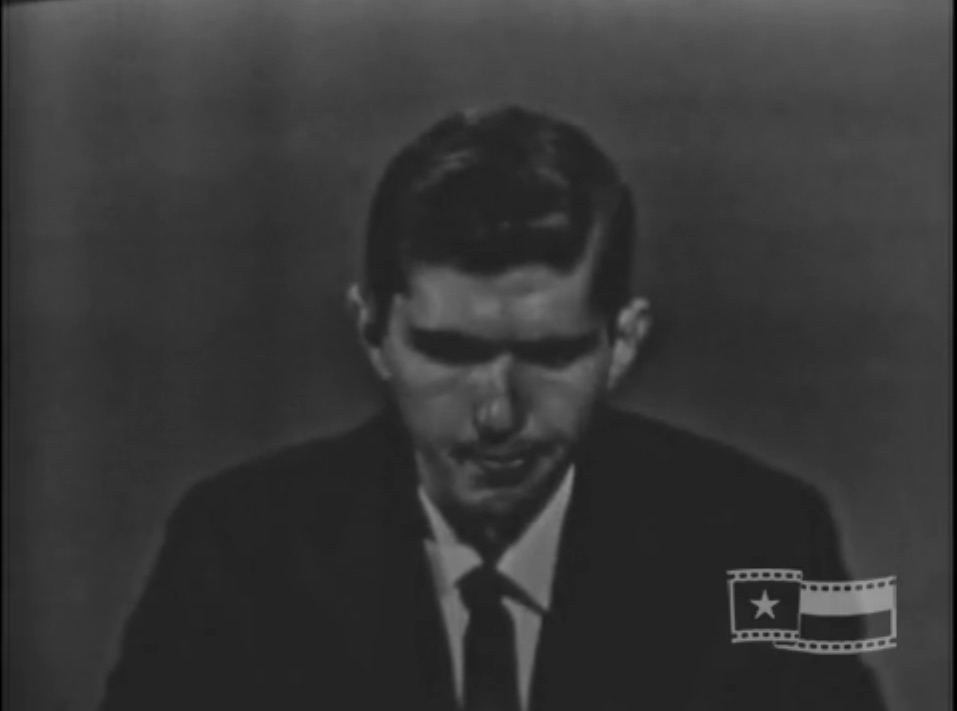
Allen Crum talks about his experience storming the tower with police officers on the local news. Video clip courtesy of the Texas Archive of the Moving Image
Crum is unambiguous on the role that armed civilians played in the shooting at this point. “The ground fire was really a Godsend to us,” he wrote, “as it got Whitman pinned down in one spot … We had no means of communication to stop it, but I don’t think that we would have stopped it.”5
As the only civilian in the group that stormed the tower observation deck, Crum became one of the heroes of the UT tower tragedy. He was widely fêted afterwards, receiving a Bravery Award from the Texas Law Enforcement Association6 and the Respect for Law Award from Optimist International, an international service organization that focuses on youth.7
Allen Crum’s statement, given to the police immediately after the shooting. Images courtesy of Austin History Center, Austin Public Library
Allen Crum also gave a description of his experience to American Rifleman, a publication of the National Rifle Association. Images courtesy of Austin History Center, Austin Public Library
However, APD Officer Houston McCoy’s account complicates this story. McCoy also stormed the tower – though he acted independently of Crum – and he, along with Officer Ramiro Martinez, are credited with killing Whitman. In 1985, McCoy sent Bill Helmer, at this point a reporter for Playboy, his own version of events. After McCoy made his way into the tower, he joined with Officer Jerry Day to go up to the observation deck. At this point, and unknown to McCoy, Allen Crum and Officer Martinez were already there. When McCoy heard someone coming down the stairs to enter the room where McCoy was holed up, he prepared to fire.
“I kept hearing noise in the room above and Jerry Day sensing that I was about to shoot the first thing that showed from up there told me that Officer Ramiro Martinez and a civilian were up there. It is a good thing the civilian did not start down the stairs before I learned of him being there.”8
A very good thing, because Crum, a civilian at the top of the tower carrying a rifle, would have exactly matched the profile of the shooter McCoy was looking for.
Houston McCoy’s official report, written immediately after the shooting. Images courtesy of Austin History Center, Austin Public Library
Several years later, Houston McCoy described his experience storming the tower and killing Charles Whitman to Bill Helmer, a reporter and fellow survivor of the UT tower shooting. Images courtesy of Austin History Center, Austin Public Library
McCoy goes on to describe the ground fire that peppered the tower and narrowly missed them while he, Crum, and the other officers got into position on the observation deck. In a press conference after the shooting, Texas Governor John Connally said that the ground fire impeded the progress of officers to the top of the tower. After McCoy and Martinez killed Whitman, they then had no effective way of telling those on the ground to stop firing. Crum waved a white flag, but even after that, sporadic ground fire continued. McCoy said that at least one TV report had shown Crum waving the flag and claimed that it was the shooter trying to give up.9 No doubt the same thought occurred to many of those firing at the tower.
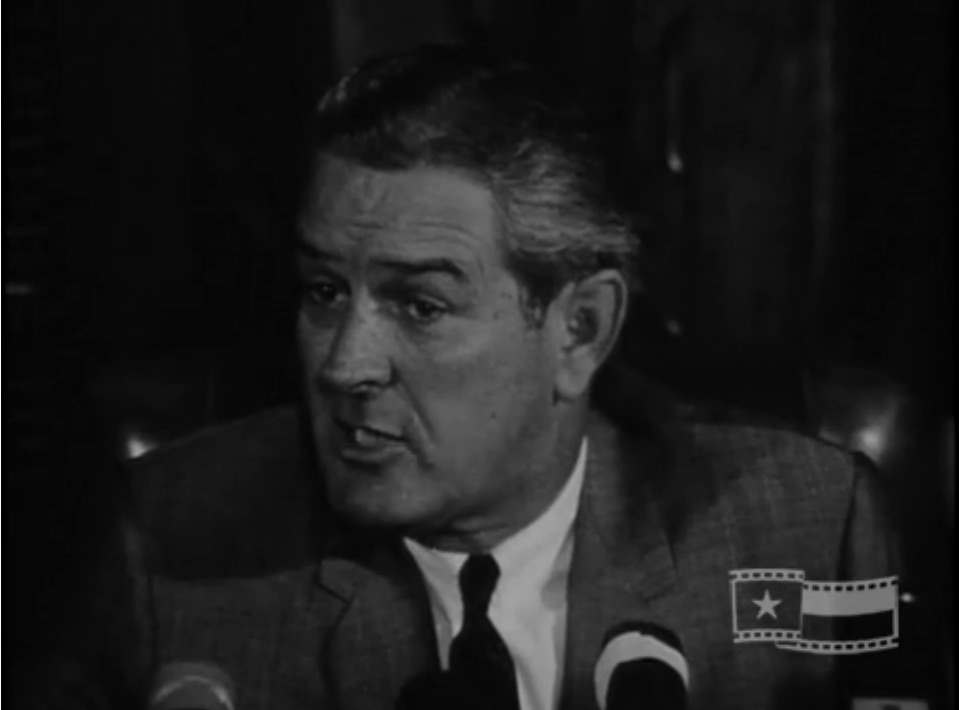
Texas Governor John Connally, while defending his Police Department, said that ground fire from civilians actually impeded the progress of officers to the top of the tower. Video clip provided courtesy of the Texas Archive of the Moving Image
By juxtaposing these two accounts, we’re able to get a more complete picture of the role armed citizens played in the UT tower shootings. The ground fire did pin down Whitman, most likely keeping him from killing more people. However, it’s not difficult to see how the actions of several armed, independent citizens could have resulted in further tragedy, and that it was only through fortuitous circumstance that they didn’t.
Armed civilians had one final effect on what happened that day. Claire Wilson was eight months pregnant when Whitman shot her and her boyfriend as they walked across the upper terrace of the South Mall. Her boyfriend, Thomas Eckman, died instantly, but Claire was only wounded. As she lay in the brutal sun, injured and unable to move, chaos engulfed the UT campus. It would be more than an hour before a woman and three young men would be able to run out and carry her to safety.10 Years later, in 2015, Claire Wilson, now Claire James, testified before the Texas State Senate Affairs Committee. The Committee was considering bills that would increase the number of weapons permitted on college campuses. In her testimony, James said that the armed citizens who were firing back at Whitman had kept emergency personnel from reaching her and her boyfriend sooner.



